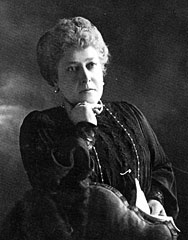Helen - Maltese Cross
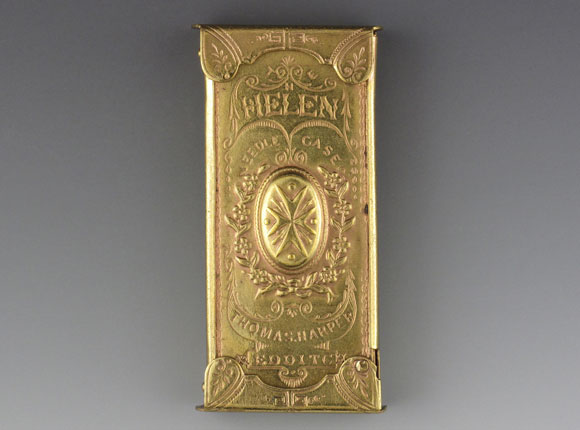
Needle Case
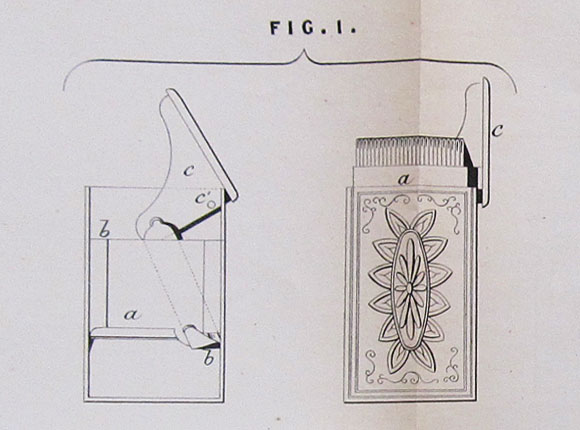
UK Patent 1869-2998 drawing
Design Details
Needle Case Type: |
Demi-Quad |
Patent/Registered to: |
William Avery, Redditch Manufacturer and Albert Fenton of the same place, Machinist |
Patent/Design Representation #: |
Mechanical Patent: #2998 |
Patent/Design Registration Date: |
October 14, 1869 |
Location of Patent/Design Registration: |
British Library - Business and Intellectual Property Centre – London |
Reference #: |
1869-2998, Figure 1 |
Dimensions: |
2.2 x 4.6 |
Material: |
Brass
Nickel-silver |
Name Variations: |
a) W. Avery & Son - Redditch
b) Cook-Son & Co - London (the sole source of this information is Horowitz and Mann as no example of this needle case
with this company name has been seen by the authors of this website)
c) Thomas Harper - Reddtich
d) H. Milward & Sons - Redditch |
Other Variations: |
See other Demi-Quads |
US Patent |
US 1870-102471 |
Additional Photographs
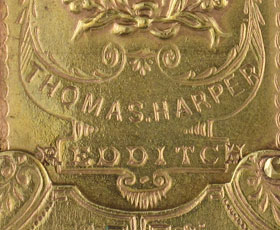
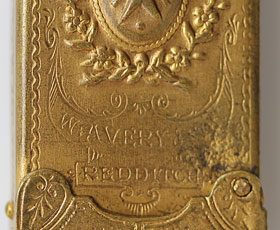
With Harper signature detail and with Avery signature detail (photo courtesty of Lynda Herrod)
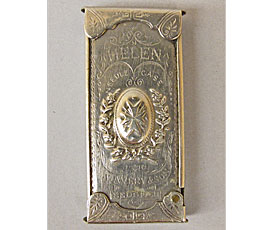
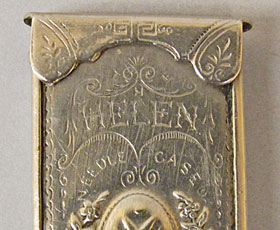
Nickel-silver version (photos courtesy of the Winterthur Museum Collection)
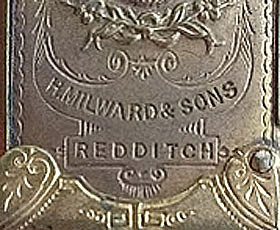
With Milward signature detail (photo courtesy of Catherine Colyer)
Facts
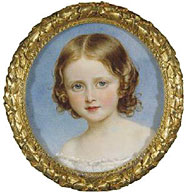
This needle case may have been named after Queen Victoria’s daughter Helena who was born in Buckingham palace in 1846. Helena was
fifteen years old when her father, Queen Victoria's husband Prince Albert of Saxe-Coburg and Gotha, died in 1861. Five years later in
1866, at age twenty, she married her third cousin Prince Christian of Schleswig-Holstein, who was fifteen years her senior. Although this
marriage was approved by Queen Victoria it was considered by many to be politically awkward. The territories of Schleswig and Holstein
were involved in a bitter dispute between Denmark and Prussia (part of Germany) and since most of the British royal family’s relations were
German, the Queen needed to take their views into consideration.
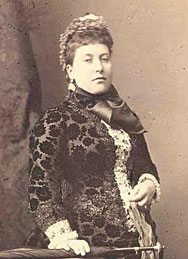
History
Helena and Prince Christian had six children: Christian (1867), Albert (1869), Helena (1870), Marie (1872) and two sons that died shortly
after or during childbirth. When they celebrated their 50th anniversary in 1916, at the height of World War I, they received
congratulations from both of Helena’s nephews King George V of Britain and Kaiser Wilhelm II from Germany. A year later her husband died
and that same year George V changed the royal families surname from Saxe-Coberg and Gotha to Windsor because of the anti-Germany feelings in
the UK at the time. Princess Helena died seven years later in 1923.
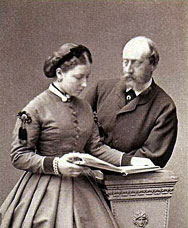
Miscellaneous
Helena’s interest in needlework lead to her becoming the first president of the School of Art Needlework in 1872 which by 1876 became the
Royal School of Needlework. The organization’s founding principles were two-fold: “to revive a beautiful art which had fallen into
disuse and, through its revival, to provide employment for educated women who, without a suitable livelihood, would otherwise find themselves
compelled to live in poverty.” Princess Helena was involved in many of the organizations fundraising activities which helped
transformation it from a group that employed 20 ladies in a small room above a bonnet shop to an establishment that had its own building in
1903 and roughly 150 workers at its peak. More information about the organization can be found by visiting the
Royal School of Needlework website.
